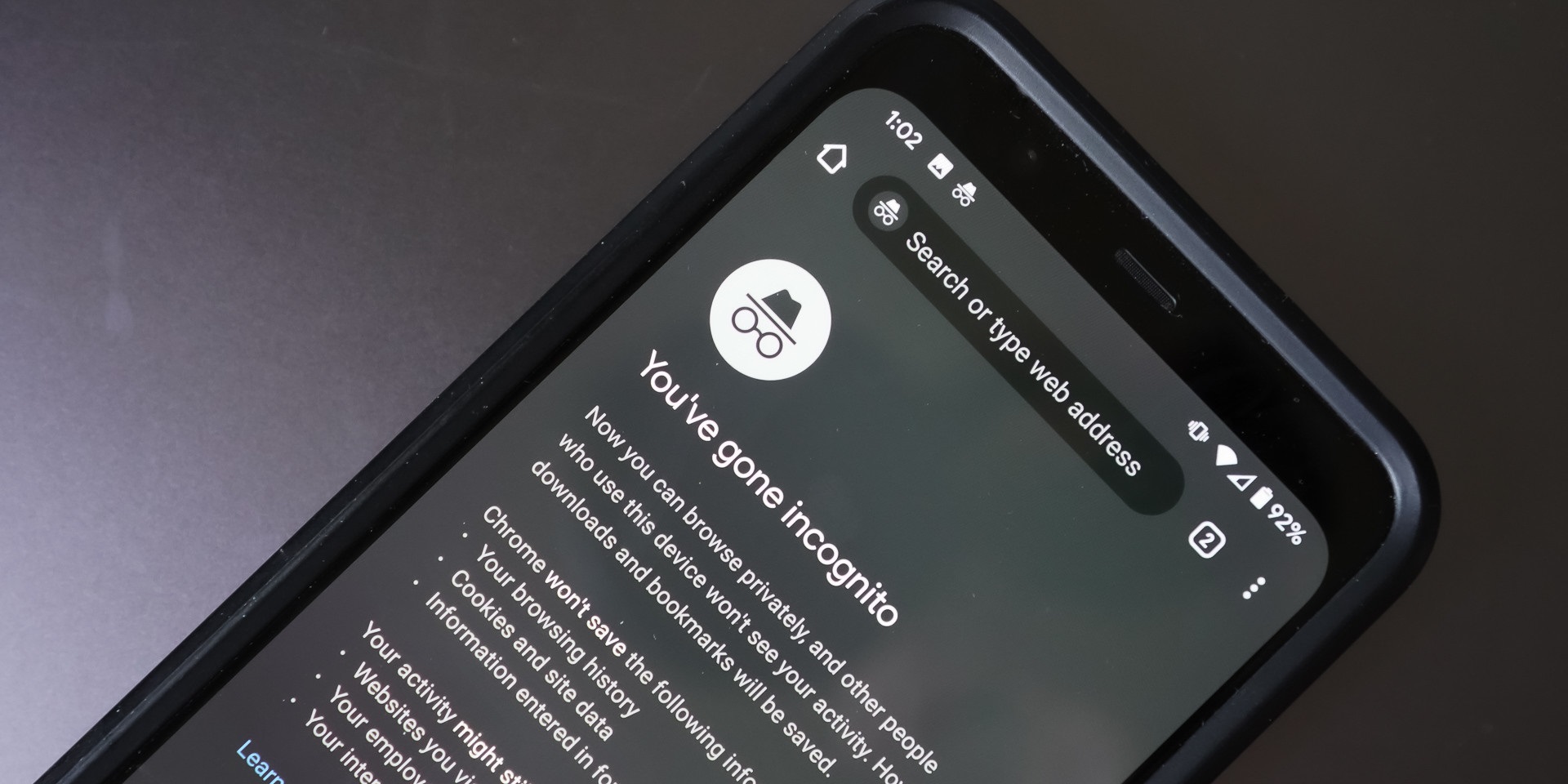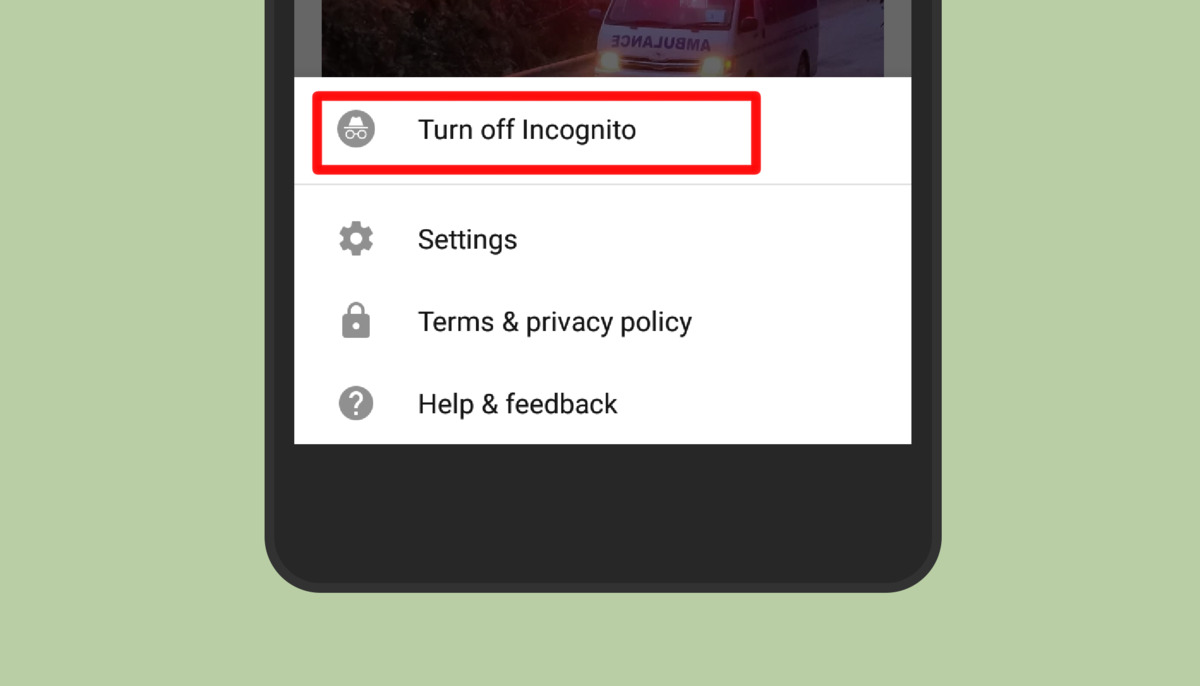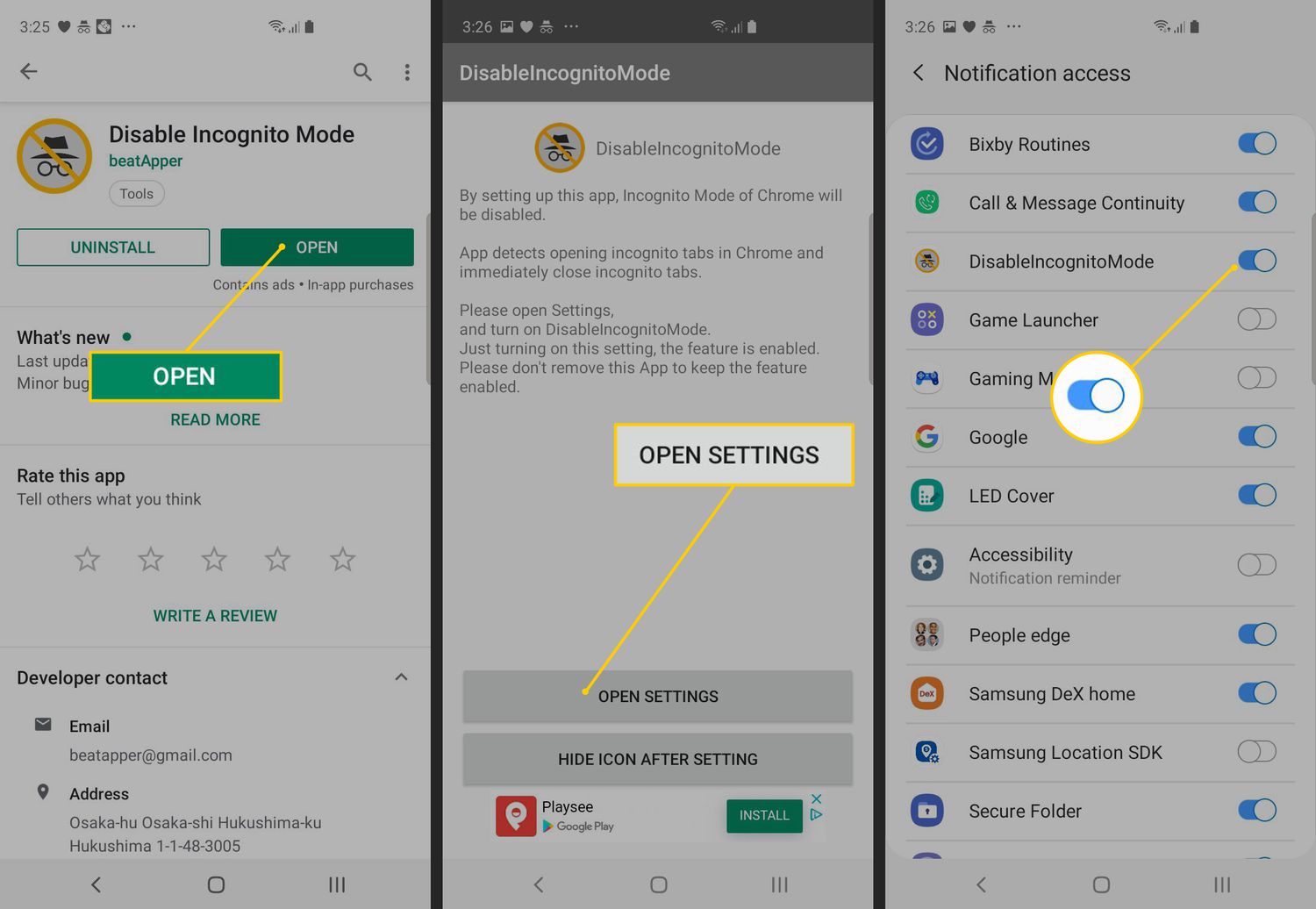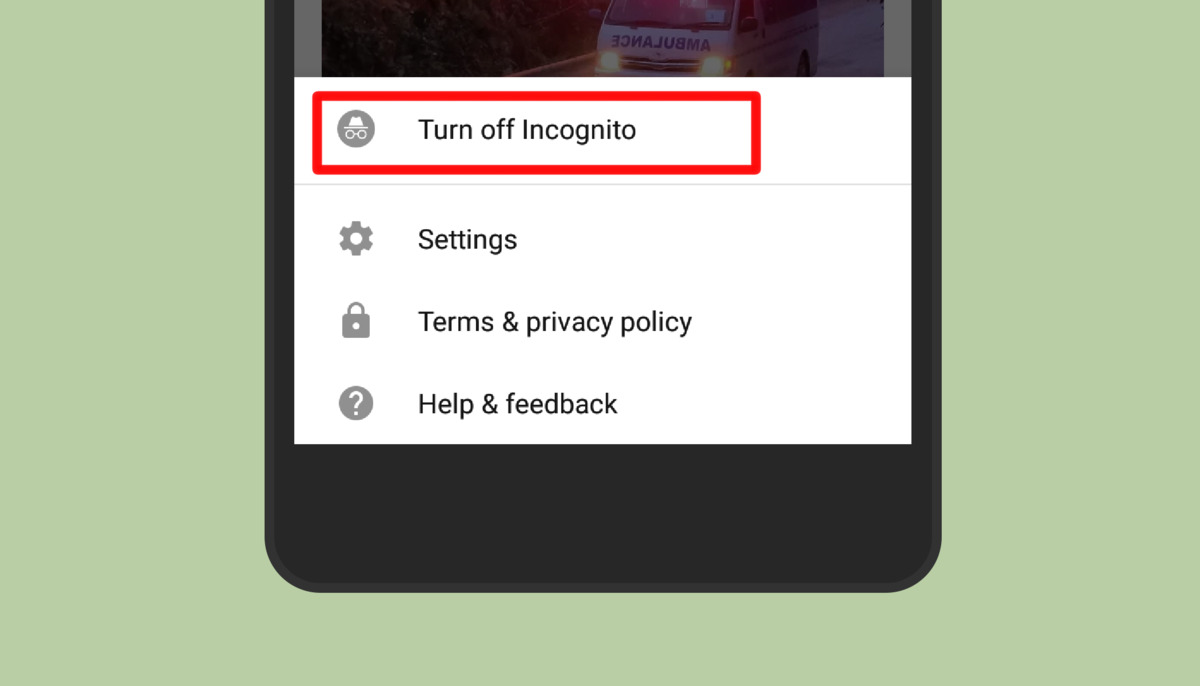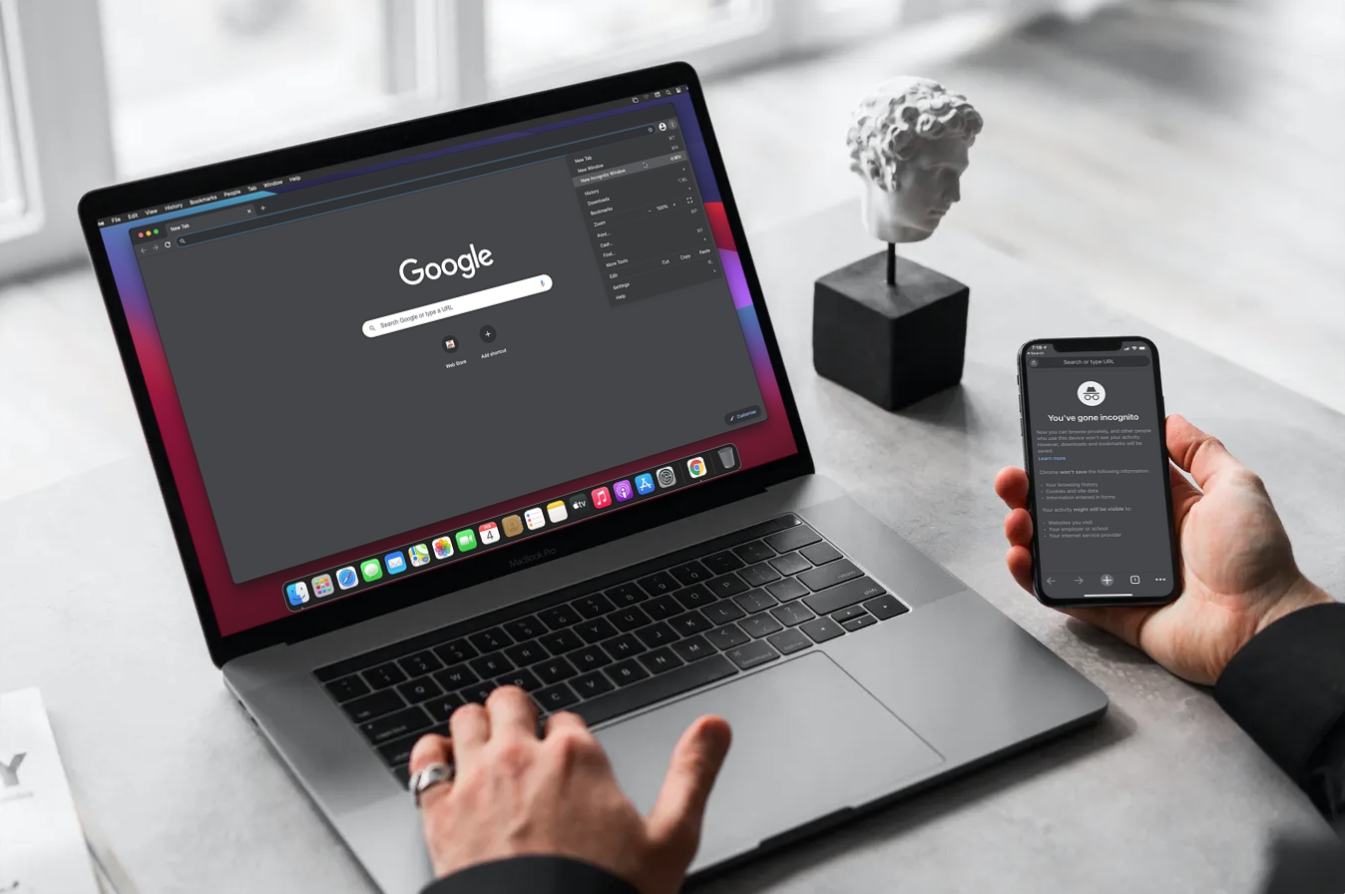Introduction
Welcome to the world of incognito mode on Android! Have you ever wanted to browse the web without leaving a trace? Incognito mode provides a solution to your privacy concerns by allowing you to surf the internet without storing your browsing history, cookies, or site data. Whether you’re a regular internet user or simply want to keep your online activities confidential, incognito mode is a feature you should take advantage of.
Incognito mode, also known as Private Browsing or Privacy Mode, is a functionality available on most modern web browsers, including Google Chrome, Mozilla Firefox, and Microsoft Edge. It provides a secure and anonymous browsing experience by preventing the browser from saving your browsing history and website activity. The purpose of incognito mode is to offer users a way to browse the internet privately, without leaving any traces behind on their devices.
Many Android users are unaware of the benefits and convenience that incognito mode offers. In this article, we’ll guide you through the steps to enable incognito mode on your Android device and explore why you should use it. Whether you’re concerned about safeguarding your personal information, avoiding targeted advertisements, or keeping your browsing habits private, incognito mode has got you covered.
So, if you’re ready to delve into the realm of private browsing on your Android device, let’s get started and discover how to go incognito!
What is Incognito Mode?
Incognito mode, sometimes referred to as private browsing or privacy mode, is a feature available in most web browsers, including the popular ones like Google Chrome, Mozilla Firefox, and Microsoft Edge. It allows users to browse the internet without leaving a digital trail. When you open a new incognito window, the browser does not save your browsing history, cookies, site data, or information entered in forms.
Essentially, incognito mode creates a separate browsing session that operates independently of your regular browsing session. This means that any activities performed in the incognito window are isolated from your normal browsing activities. For example, when you visit websites in incognito mode, they won’t appear in your browsing history or autocomplete suggestions when you type in the browser’s address bar.
It’s important to note that while incognito mode provides privacy within the browsing session, it does not offer complete anonymity or security from other entities, such as your internet service provider (ISP) or websites you visit. Additionally, your activity may still be visible to websites you visit, your employer, or the network administrator if you’re browsing on a public or work Wi-Fi network.
While the specifics may vary slightly across different browsers, the core functionality of incognito mode remains consistent. It aims to provide users with a private, temporary browsing session without leaving traces on the device they’re using. This can be useful for a variety of reasons, such as preventing others from seeing your browsing history or avoiding personalized advertisements based on your browsing habits.
Now that we have a better understanding of what incognito mode is, let’s explore why you might want to use it on your Android device.
Why use Incognito Mode on Android?
Incognito mode offers a range of benefits that make it an essential tool for Android users seeking privacy and convenience while browsing the internet. Let’s explore some key reasons why you should consider using incognito mode on your Android device.
1. Protect your privacy: Incognito mode allows you to browse the web without leaving a trace of your online activities. It’s ideal for situations where you don’t want your browsing history, cookies, or site data stored. Whether you’re researching sensitive topics, planning surprises, or simply wanting to keep your browsing habits private, incognito mode provides a layer of protection.
2. Share devices without leaving traces: If you’re using a shared Android device, such as a family tablet or smartphone, using incognito mode ensures that your browsing history won’t mix with others. This comes in handy especially when you don’t want your family members or friends to accidentally stumble upon your internet searches or website visits.
3. Test websites and services: Incognito mode can be useful for web developers or testers. It allows you to visit websites without cookies and cache interfering with your results. This ensures a more accurate representation of how the website functions for a first-time visitor.
4. Avoid targeted advertisements: By using incognito mode, you can prevent websites and advertisers from tracking your browsing behavior and displaying personalized advertisements. This can be beneficial if you’re tired of constantly seeing ads related to your recent searches or browsing history. Incognito mode keeps your browsing session isolated from your regular session, ensuring that your online activities don’t influence the ads you see.
5. Temporary sessions: Incognito mode is perfect for one-time sessions, such as logging into a public computer or using a friend’s device. It ensures that your login details, browsing history, and other personal information are not stored after you close the incognito window. This helps maintain your privacy and reduces the risk of unauthorized access to your accounts.
6. Clear browsing data easily: Browsing in incognito mode automatically clears your browsing history, cookies, and temporary files when you close the session. This saves you the hassle of manually deleting your browsing data and ensures a clean slate for your browsing activities within the incognito window.
By using incognito mode on your Android device, you can enjoy a more private and secure browsing experience while avoiding some of the pitfalls associated with regular browsing. Now that we understand why using incognito mode is beneficial, let’s learn how to enable it on Android.
How to Enable Incognito Mode on Android
Enabling incognito mode on your Android device is a simple process that can be done in just a few steps. Here’s a step-by-step guide to help you enable incognito mode on popular web browsers like Google Chrome:
Step 1: Open the Google Chrome app
Launch the Google Chrome app on your Android device. You can usually find the app icon on your home screen or in the app drawer.
Step 2: Tap on the three dots at the top-right corner
In the top-right corner of the Chrome app, you’ll see three vertical dots. Tap on these dots to access the browser menu.
Step 3: Select “New incognito tab” from the menu
A menu will appear after tapping on the three dots. Look for the option labeled “New incognito tab” and tap on it. This will open a new incognito tab where you can start browsing privately.
Step 4: Start browsing in Incognito Mode
You’re now using incognito mode in Google Chrome! Any websites you visit, searches you perform, or forms you fill out will not be saved in your browsing history or cookies. You can use this incognito tab to browse the web privately.
It’s worth noting that the process to enable incognito mode may vary slightly across different web browsers. However, the general concept remains the same – accessing the browser menu and selecting the option to open a new incognito tab.
If you prefer using other web browsers on your Android device, like Mozilla Firefox, Microsoft Edge, or Opera, you can also enable incognito mode in a similar manner. Simply open the browser app, access the menu, and look for an option that indicates private browsing or incognito mode.
Now that you know how to enable incognito mode, let’s explore the benefits and advantages of using this mode in more detail.
Step 1: Open the Google Chrome app
The first step to enable incognito mode on your Android device is to open the Google Chrome app. You can find the Chrome app icon on your home screen or in the app drawer. Look for a round icon with different shades of blue, resembling a compass.
Tap on the Chrome app icon to launch the browser. It may take a moment to load, especially if you have a slow internet connection or many tabs open. Once the app is open, you’ll be greeted with the familiar Chrome interface, including the address bar at the top and a row of icons at the bottom.
If you’re using a different web browser, such as Mozilla Firefox or Microsoft Edge, the steps to enable incognito mode may vary slightly. However, the general process should still be similar.
Now that you have the Google Chrome app open, and you’re ready to enable incognito mode, let’s move on to the next step.
Step 2: Tap on the three dots at the top-right corner
Once you have the Google Chrome app open on your Android device, look for the three dots located at the top-right corner of the browser interface. These dots represent the menu button in Chrome.
Tap on the three dots to access the browser menu. A drop-down menu should appear, displaying a list of options and features available in Chrome. This menu is where you can find various settings, bookmarks, and additional browsing options.
The placement of the menu button may vary slightly depending on the version of Chrome or your device’s screen size. However, it is typically located near the address bar at the top of the browser interface.
By tapping on the three dots, you’ll reveal a world of possibilities, allowing you to customize your browsing experience and access different features offered by Chrome. The menu is designed to be user-friendly and intuitive, so navigating through it should be fairly straightforward.
In the upcoming step, we’ll explore how to select the option to enable incognito mode from the menu.
Step 3: Select “New incognito tab” from the menu
After tapping on the three dots at the top-right corner of the Google Chrome app, a drop-down menu will appear on your Android device screen. This menu contains various options to personalize your browsing experience and access additional features offered by Chrome.
To enable incognito mode, scroll through the menu and look for the option labeled “New incognito tab.” It is usually located near the bottom of the menu, under the “New tab” or “Close all tabs” option.
Tap on “New incognito tab” to open a new tab in incognito mode. You will notice that the interface of the new tab appears slightly different from a regular tab. It is usually shaded in dark or gray to indicate that you’re browsing in incognito mode.
By selecting “New incognito tab,” you have now enabled incognito mode in Google Chrome on your Android device. Any websites you visit, searches you perform, or forms you fill out in this new tab will not be saved in your browsing history or cookies.
It’s important to note that while you’re browsing in incognito mode, any tabs that were previously open will continue to operate in regular mode until you close them or specifically open them in incognito mode. Each tab in Chrome functions independently, so you can have a mix of incognito and regular tabs open simultaneously.
In the next step, we’ll explore how to start browsing in incognito mode within the newly opened tab.
Step 4: Start browsing in Incognito Mode
Now that you have opened a new incognito tab in Google Chrome on your Android device, you are ready to start browsing the web in incognito mode.
In the newly opened incognito tab, you will find the same familiar interface as a regular tab, with an address bar at the top and a row of icons at the bottom. However, any actions you take within this specific tab will not be saved in your browsing history, cookies, or site data.
You can now enter a website URL or search for a specific term in the address bar to begin browsing privately. As you navigate through websites, you will notice that Chrome does not save your browsing history, and any cookies or site data associated with your activity in the incognito tab will be deleted once you close it.
It’s crucial to remember that while incognito mode provides privacy within the browsing session, it does not provide complete anonymity or security. Your internet service provider (ISP), websites you visit, or network administrators still have the potential to monitor your online activities. Therefore, exercise caution and avoid entering sensitive or personal information while browsing in incognito mode.
If you ever want to open a new incognito tab during your browsing session or switch back to a regular browsing mode, you can repeat the previous steps in Google Chrome. Tap the three dots at the top-right corner, select “New incognito tab” from the menu, and a new incognito tab will be created for your private browsing.
That’s it! You have successfully enabled and started browsing in incognito mode on your Android device using Google Chrome. Enjoy the privacy and freedom that incognito mode provides as you explore the web.
Using Other Browsers in Incognito Mode
While Google Chrome is a popular browser choice for many Android users, there are other browsers available that offer incognito or private browsing modes. If you prefer using a different browser on your Android device, such as Mozilla Firefox, Microsoft Edge, or Opera, you can also enjoy the benefits of incognito mode. Here’s how to enable incognito mode in some of these popular browsers:
Step-by-step guide for Mozilla Firefox:
- Open the Mozilla Firefox app on your Android device.
- Tap on the three horizontal lines in the bottom-right corner to access the menu.
- Select the purple mask icon labeled “New Private Tab” to open a new incognito tab.
- You can now browse privately in the newly opened incognito tab.
Step-by-step guide for Microsoft Edge:
- Launch the Microsoft Edge app on your Android device.
- Tap on the three horizontal dots at the bottom-right corner to open the menu.
- Select the option labeled “New InPrivate tab” to open a new incognito tab.
- You can now enjoy private browsing in the newly created incognito tab.
Step-by-step guide for Opera:
- Open the Opera browser app on your Android device.
- Tap on the red “O” icon at the bottom-right corner to access the menu.
- Select the blue mask icon labeled “Private” to start a new private browsing session.
- You can now browse the web privately in the newly opened private browsing window.
Remember that while the process may differ slightly across these browsers, the idea is the same – accessing the browser menu and selecting the option to open a new incognito or private browsing tab or window.
Using incognito mode in different browsers allows you to enjoy private and secure browsing experiences outside of Google Chrome. Whether you’re concerned about your browsing history, cookies, or site data being stored, or simply want to maintain privacy and prevent personalized tracking, enabling incognito mode in your preferred browser is a great solution.
Now that you know how to use incognito mode in various browsers on your Android device, let’s explore the benefits that come with browsing in incognito mode in the next section.
Step-by-step guide for Mozilla Firefox
- Open the Mozilla Firefox app on your Android device.
- Tap on the three horizontal lines located in the top-right corner of the browser interface. This will open the main menu.
- Scroll down the menu and look for the option labeled “New Private Tab” or “New Incognito Tab.” Tap on it to open a new tab in incognito mode.
- A new tab will open, indicating that you are now browsing in incognito mode. The interface of the incognito tab may be slightly different from the regular tabs, often colored differently or displaying a private browsing icon.
- You can now start browsing privately in the newly opened incognito tab. Any websites visited, searches performed, or forms filled out in this tab will not be saved in your browsing history or cookies.
The process to enable incognito mode in Mozilla Firefox on Android is quick and straightforward. By following the above step-by-step guide, you can effortlessly switch to incognito mode and enjoy private browsing sessions on your Android device.
Please note that the steps provided are accurate at the time of writing but may be subject to change depending on software updates or version differences of the Mozilla Firefox app.
Now that you know how to enable incognito mode in Mozilla Firefox, let’s explore the benefits and advantages of using incognito mode in the next section.
Step-by-step guide for Microsoft Edge
- Launch the Microsoft Edge app on your Android device.
- Tap on the three horizontal dots located in the bottom-right corner of the browser interface to access the menu.
- Scroll through the menu and look for the option labeled “New InPrivate tab.” Tap on it to open a new tab in incognito mode.
- A new tab will open, indicating that you are now browsing in incognito mode. The interface of the incognito tab may appear slightly different from regular tabs, often displaying the InPrivate icon or a reminder that you are browsing privately.
- You can now start browsing the web privately in the newly opened incognito tab. Any websites visited, searches performed, or forms filled out in this tab will not be saved in your browsing history or cookies.
Enabling incognito mode in Microsoft Edge on your Android device is a straightforward process. By following the provided step-by-step guide, you can easily switch to incognito mode and enjoy private browsing sessions.
Please keep in mind that the steps mentioned above are accurate at the time of writing but may be subject to change depending on software updates or version differences of the Microsoft Edge app.
Now that you know how to enable incognito mode in Microsoft Edge, let’s explore the benefits and advantages of using incognito mode in the next section.
Step-by-step guide for Opera
- Open the Opera browser app on your Android device.
- Tap on the red “O” icon located in the bottom-right corner of the browser interface. This will open the menu.
- Scroll through the menu and look for the blue mask icon labeled “Private” or “Private mode.” Tap on it to start a new private browsing session.
- A new tab will open, indicating that you are now browsing in incognito or private mode. The interface of the private browsing tab may have a different color scheme or display a “Private” icon to differentiate it from regular tabs.
- You can now start browsing the web privately in the newly opened private browsing tab. Any websites visited, searches performed, or forms filled out in this tab will not be saved in your browsing history or cookies.
Enabling private browsing mode in Opera on your Android device is a simple process. By following the provided step-by-step guide, you can easily switch to private browsing and enjoy a more confidential browsing experience.
It’s important to note that the steps mentioned above are accurate at the time of writing but may be subject to change depending on software updates or version differences of the Opera browser app.
Now that you know how to enable private browsing in Opera, let’s explore the benefits and advantages of using incognito mode in the next section.
Benefits of using Incognito Mode on Android
Using incognito mode on your Android device offers a range of benefits that can enhance your browsing experience and safeguard your privacy. Let’s explore some of the key advantages of using incognito mode:
Increased privacy and security:
When you browse in incognito mode, your browsing history, cookies, and site data are not stored on your device. This provides an added layer of privacy and helps protect your sensitive information from being accessed or viewed by others who may have access to your device.
Preventing websites from tracking your data:
Incognito mode blocks websites from tracking your browsing behavior, making it more difficult for them to collect data about your online activities. This can help reduce targeted advertising and prevent your data from being shared with third-party advertisers.
Avoiding personalized advertisements:
By browsing in incognito mode, you can avoid personalized advertisements that are based on your browsing history or online behavior. Without the data collected during incognito browsing, advertisers have limited knowledge about your interests and preferences.
Clearing browsing data automatically:
Incognito mode automatically clears your browsing history, cookies, and other temporary files when you close the browsing session. This saves you the time and effort of manually deleting your browsing data and ensures that your browsing activities remain private.
Testing without interference:
If you are a web developer or tester, using incognito mode allows you to conduct tests without interference from stored cookies, login credentials, or preferences. This provides a clean slate for testing and ensures more accurate results.
Bypassing paywalls and limitations:
Some websites restrict access to certain content or impose limitations on the number of free articles you can read. By using incognito mode, you can bypass these limitations as browsing in incognito mode does not save any cookies or browsing history that the website could use to track your visits.
By leveraging the benefits of incognito mode, you can enjoy a more private and secure browsing experience on your Android device. Whether you’re concerned about your privacy, want to avoid targeted ads, or need a clean browsing environment for testing, incognito mode is a valuable feature to utilize.
Increased privacy and security
One of the key benefits of using incognito mode on your Android device is the increased privacy and security it provides. When you browse in incognito mode, your browsing history, cookies, and site data are not saved, ensuring a more confidential browsing experience.
By not storing your browsing history, incognito mode helps protect your privacy. This means that anyone who gains access to your device will not be able to see a record of the websites you visited. Whether you’re using a shared device or simply value your privacy, incognito mode offers a layer of protection.
In addition to browsing history, incognito mode also prevents the storage of cookies. Cookies are small text files that websites store on your device to remember information about your visits, such as login credentials or preferences. By not saving cookies, incognito mode helps prevent websites from tracking your online activities.
Moreover, incognito mode also prevents the storage of other site data, such as cache and temporary files. This can help protect you from potential security risks, as these files can potentially be accessed by malicious individuals to gather sensitive information.
It’s essential to note that while incognito mode provides increased privacy and security, it is not foolproof. While your browsing history and site data are not stored locally on your Android device, your internet service provider (ISP), employers, or network administrators may still be able to keep track of your online activities. Additionally, websites you visit may collect information about your visit even if you’re using incognito mode.
However, despite the limitations, incognito mode remains an effective tool for preserving your privacy and minimizing the data trail left behind while browsing the web. By enabling incognito mode on your Android device, you can enjoy a more secure and confidential browsing experience.
Now that we’ve explored the benefits of increased privacy and security, let’s continue to the next section and examine how incognito mode helps in preventing websites from tracking your data.
Preventing websites from tracking your data
Another significant advantage of using incognito mode on your Android device is the ability to prevent websites from tracking your data. Incognito mode helps protect your online privacy by blocking websites from collecting information about your browsing behavior.
Regular browsing sessions often involve the use of cookies, which are small text files that websites store on your device. These cookies contain information about your browsing activities, preferences, and even login credentials. They enable websites to track your behavior and provide a personalized experience, but they also raise privacy concerns.
When you browse in incognito mode, the browser does not save cookies or other site data associated with your session. This means that websites cannot track your activities or gather data about your online behavior. Without access to this information, websites are unable to build a comprehensive profile of your interests and preferences.
By blocking tracking cookies, incognito mode helps preserve your anonymity and minimizes the impact of targeted advertising. This means that you’re less likely to see personalized ads based on your browsing history and online activities, as websites cannot tailor their ads to your specific interests.
Furthermore, incognito mode also prevents the storage of other browsing data, such as cached files and temporary internet files. This ensures that websites cannot retrieve any residual data from your previous browsing sessions, enhancing your privacy and reducing the risk of unauthorized data collection.
It’s important to note that while incognito mode provides a degree of protection against tracking, it is not a foolproof method. Some websites may still employ other techniques, such as fingerprinting, to track your activity even in incognito mode. Additionally, your ISP or network administrator may have tools in place to monitor your online behavior.
While incognito mode cannot guarantee complete anonymity, it is a valuable tool for minimizing the data trail left behind and reducing the impact of website tracking. By using incognito mode on your Android device, you can take a proactive step towards protecting your online privacy and controlling the information that websites can collect about you.
Now that we understand how incognito mode helps prevent websites from tracking your data, let’s move on to the next section to explore how it can help you avoid personalized advertisements.
Avoiding personalized advertisements
One of the perks of using incognito mode on your Android device is the ability to avoid personalized advertisements that are based on your browsing history and online behavior. In incognito mode, websites are unable to access your browsing history, cookies, or other data, minimizing the information available to advertisers.
Personalized advertisements, also known as targeted ads, are ads that are tailored to your specific interests and preferences. They are generated based on the data collected about your online activities, including the websites you visit, the searches you perform, and the products you interact with. While personalized ads can provide relevant recommendations, some people may find them intrusive or privacy-invasive.
By browsing in incognito mode, you can escape the cycle of targeted advertising. Since your browsing history and cookies are not saved, advertisers have limited access to the data they would typically use to display personalized ads. As a result, the ads you encounter while in incognito mode are typically more generalized and less reflective of your specific browsing habits.
Additionally, by avoiding personalized advertisements, you may also experience fewer distractions and interruptions while browsing. Without ads tailored to your preferences, you can focus more on the content you’re consuming or the tasks you’re trying to complete, enhancing your overall user experience.
It’s important to note that while incognito mode can help minimize personalized advertisements, it is not a foolproof method. Advertisers may still employ techniques such as contextual targeting, demographic targeting, or other methods to display relevant ads based on factors other than your browsing history.
Furthermore, keep in mind that personalized advertisements are a result of the data ecosystem on the internet. Even if you use incognito mode, other aspects of your online behavior, such as social media activity or interactions with non-incognito websites, may still be tracked and used to serve targeted ads.
Nevertheless, incognito mode is a useful feature that can reduce the influence of targeted advertising and provide a more neutral browsing experience. By using incognito mode on your Android device, you can enjoy a break from personalized ads and focus on the content that matters to you.
In the next section, we’ll explore how incognito mode’s automatic clearing of browsing data can benefit you.
Clearing browsing data automatically
Incognito mode on your Android device offers the convenience of clearing browsing data automatically. When you browse in incognito mode, your browsing history, cookies, and other temporary files are not stored on your device. This ensures a clean slate for each incognito browsing session and eliminates the need to manually clear your browsing data.
By clearing browsing data automatically, incognito mode provides several benefits:
1. Privacy: Automatic clearing of browsing data helps protect your privacy. Since no browsing history or cookies are stored, there is no chance of someone stumbling upon your internet activity. This is especially beneficial when sharing devices or using public computers.
2. Convenience: With automatic clearing, you don’t have to remember to manually delete your browsing history or cookies after using incognito mode. This saves time and effort, allowing you to browse privately without worrying about leaving a digital trace behind.
3. Efficiency: Clearing browsing data automatically ensures that your device’s storage space is not unnecessarily occupied by temporary files. This can help optimize the performance of your Android device, preventing it from slowing down due to excessive data accumulation.
4. Protection against tracking: By clearing browsing data automatically, incognito mode minimizes the chances of websites tracking your online activities. Without stored cookies or site data, it becomes difficult for websites to recognize and track you across multiple sessions.
However, it’s important to note that while incognito mode clears your browsing data automatically, it does not impact the data stored by websites, internet service providers (ISPs), or other entities. For complete privacy, consider pairing incognito mode with other privacy measures, such as using a virtual private network (VPN) and regularly clearing your browser cache and cookies.
Keep in mind that automatic clearing of browsing data occurs only within the incognito session. Any activities or data generated outside of incognito mode, including non-incognito browsing sessions, will still be stored as usual. If you need to clear browsing data for non-incognito sessions, you’ll need to do so manually in your browser’s settings.
By utilizing incognito mode and taking advantage of its automatic clearing of browsing data, you can enjoy a private, efficient, and hassle-free browsing experience on your Android device.
Now that we’ve explored the benefits of automatic clearing of browsing data, let’s move on to the next section and conclude our discussion on incognito mode on Android.
Conclusion
Incognito mode is a valuable feature available on various web browsers for Android devices. It offers users the ability to browse the internet privately and securely, without leaving a digital trail of their online activities. By enabling incognito mode, you can enjoy increased privacy and security, keep your browsing history and cookies separate from shared devices, and prevent websites from tracking your data.
In this article, we explored how to enable incognito mode on popular web browsers like Google Chrome, Mozilla Firefox, Microsoft Edge, and Opera. We provided step-by-step guides for each browser, ensuring that you can easily navigate the process and start browsing privately in incognito mode. We also examined the benefits of using incognito mode on Android, including increased privacy and security, prevention of website tracking, avoidance of personalized advertisements, and automatic clearing of browsing data.
While incognito mode does provide enhanced privacy and security, it is important to remember that it is not a foolproof solution. Other entities, such as your internet service provider or network administrators, may still have access to your online activities. It is also important to be cautious and avoid sharing sensitive information while browsing in incognito mode.
In conclusion, incognito mode is a powerful tool that Android users can utilize to protect their privacy, browse the web discreetly, and control their online footprint. Whether you’re conducting sensitive research, sharing a device with others, or simply want a more private browsing experience, enabling incognito mode on your Android device can be a practical and effective solution.
So, the next time you need to browse privately, remember to activate incognito mode and enjoy the benefits it offers while exploring the vast world of the internet.







